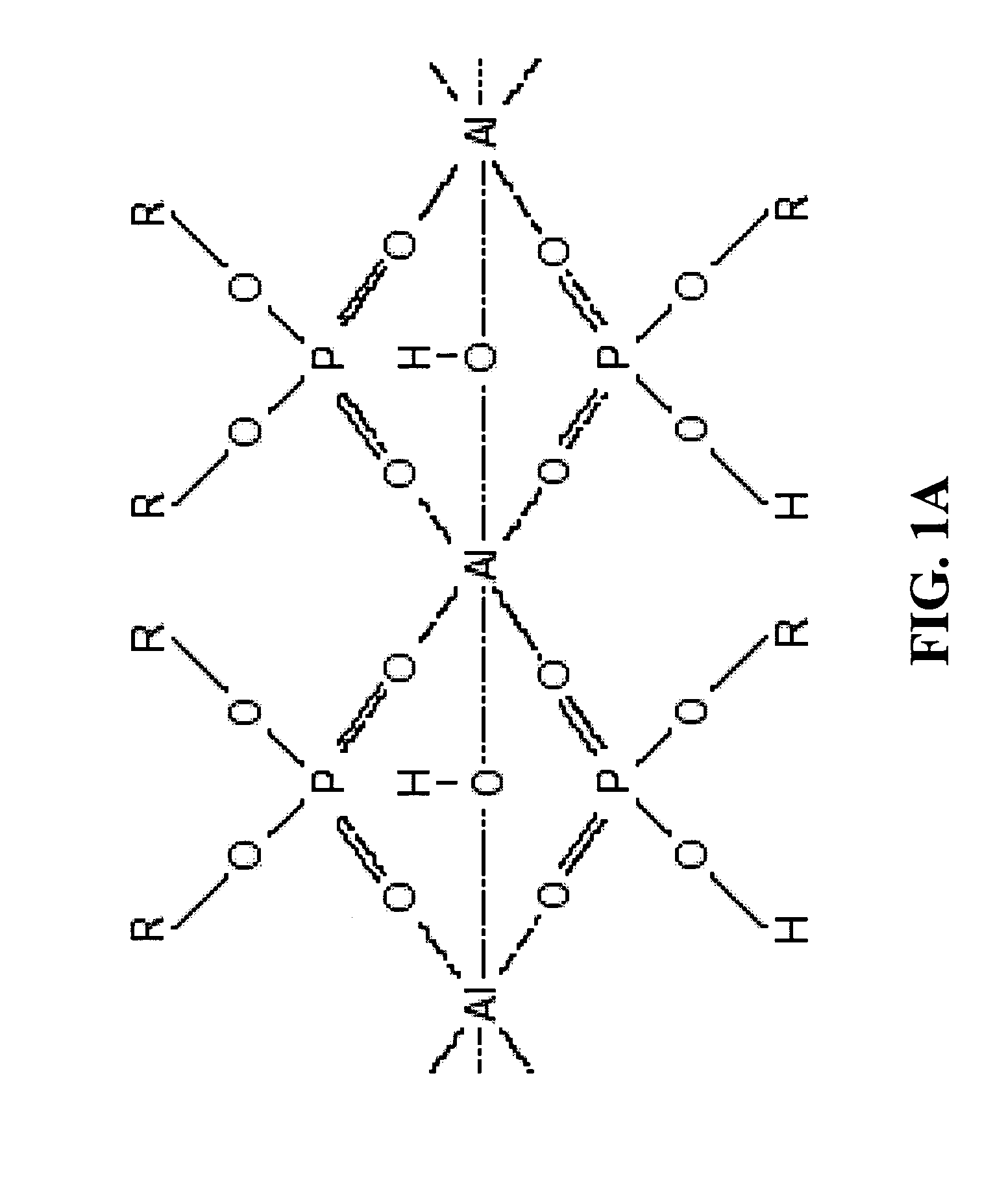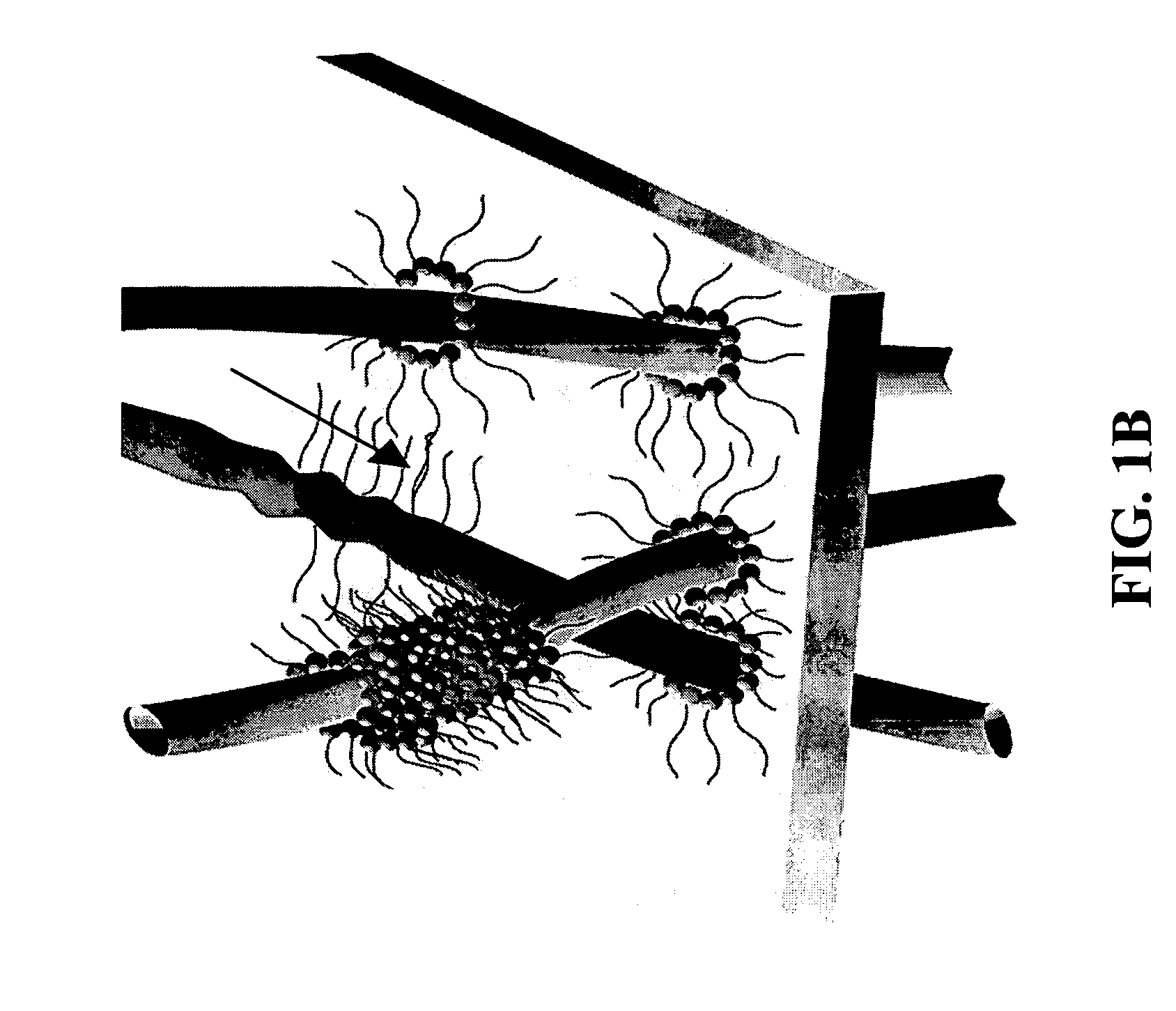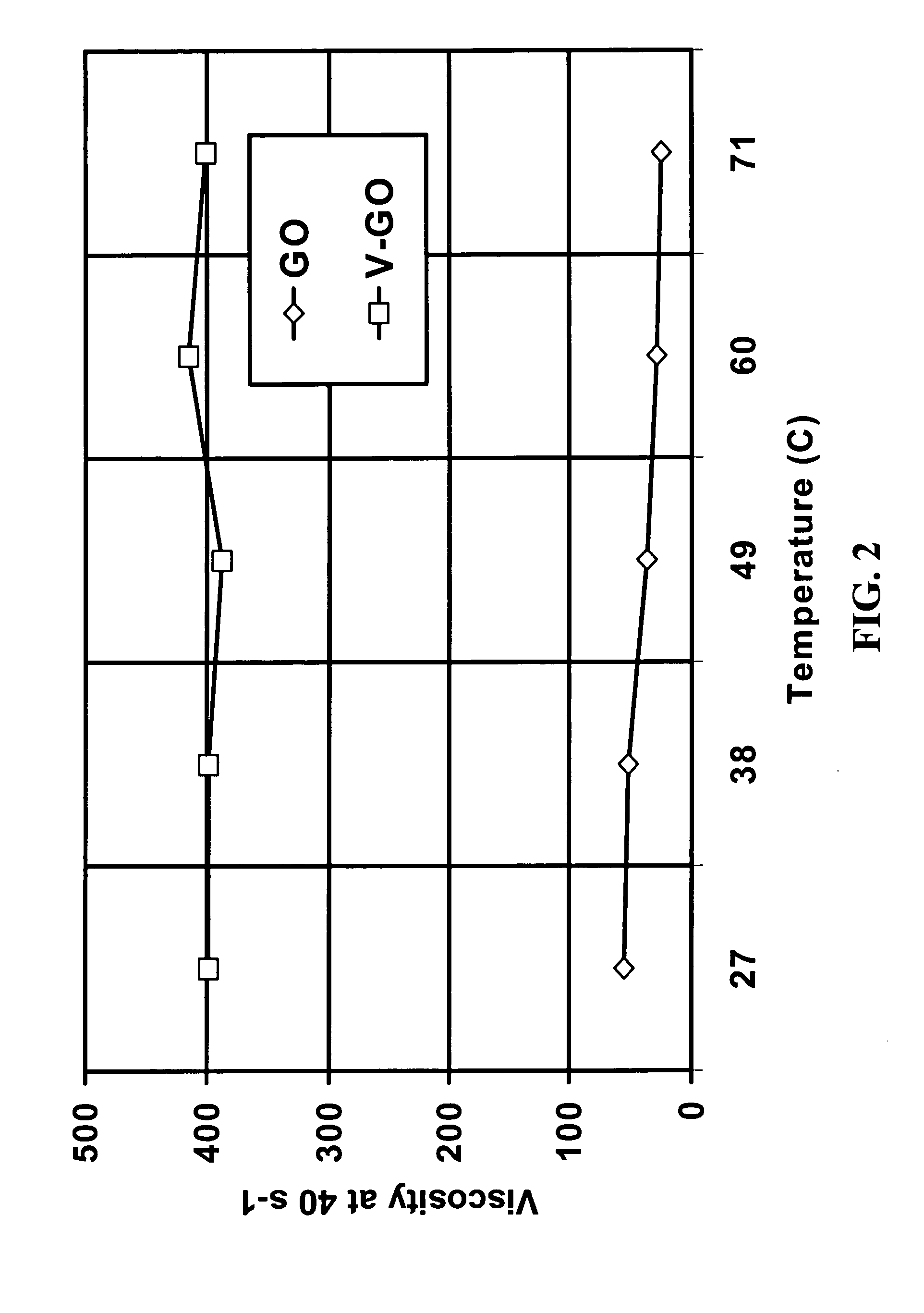Gelled oil with surfactant
a gelling oil and surfactant technology, applied in the field of gelled oils, can solve the problems of increased rigidity of the structure, increased viscosity of the fluid, and incompatibility of high-molecular weight compounds, especially paraffins and asphaltenes, etc., to and increase the viscosity of the fluid
- Summary
- Abstract
- Description
- Claims
- Application Information
AI Technical Summary
Problems solved by technology
Method used
Image
Examples
example 1
[0068] This example shows the preparation of a conventional (prior art) gelled oil (GO): 5 ml of PH-1 and 1.2 ml of AL-1 were added to 1 L of diesel in that order in a Kitchen Blender. The fluid was mixed at low shear for 15 minutes at room temperature. (Conventional gelled oils generate good gels in about 15 minutes at what we will call low shear (on the low speed (about 500 rpm) of the Kitchen Blender). They generate good gels in about 3 to 5 minutes at what we will call high shear (for example 4000 rpm on a Waring Blender.) At higher shears the viscosity is generated quickly but there may be some non-recoverable shear degradation. All gels made in this and the following examples were made at low shear unless indicated otherwise.) The viscosity was measured with the Fann 35 rheometer unless otherwise specified. The viscosities at different shear conditions were measured at various temperatures
[0069] Results are shown in Table 1. Lower concentrations, and a higher ratio (in this c...
example 2
[0070] This example shows the preparation of conventional (prior art) gelled oils with higher AL-1 concentrations: The data are given under example 5 and show that at a constant concentration of PH-1 and increasing amounts of AL-I (lower ratios of PH-1 to AL-1) the viscosity increased a modest amount. It is believed that 1.2 ml / L AL-1 is about the lowest concentration that should be used with 5 ml / L PH-1 without risking an abrupt break in this system. However, because the addition of a gel-enhancing surfactant made this fluid system much more robust (much less sensitive to the concentrations and ratios of the additives) most of the work detailed below was done with the “dangerous” concentrations of 5 ml / L PH-1 and 1.2 ml / L AL-1. When a suitable gel-enhancing surfactant was used, the fluid systems were always satisfactory and were always better than the fluid systems made without the addition of the gel-enhancing surfactant, even with those amounts of additives.
example 3
[0071] This example shows the preparation of exemplary viscoelastic gel-enhancing surfactant / gelled oil systems (V-GO's) of the invention: 5 ml of PH-1, 1.2 ml of AL-1, and 5 ml of S-1 were added to 1 L of diesel in that order in a kitchen blender. The fluid is mixed at low shear for 15 minutes at room temperature. The viscosity was measured with the Fann 35 rheometer unless otherwise specified. The data under various conditions are given in Table 2.
TABLE 2Diesel (solvent) + 5 ml / L PH-1 + 1.2 ml / L AL-1 + 5 ml / L S-1Shear RateTemperature40 sec−1170 sec−1511 sec−127 C.3991124338 C.3991124349 C.3881124260 C.4151204671 C.40111647
[0072] Note that experiments have shown that if S-1 is added to diesel and the mixture is maintained at ambient temperature for a long time, addition of PH-1 and AL-1 does not result in the generation of useful viscosity. If PH-1 and AL-1 are added to diesel first, then the S-1 may be added later, either before or after the gel has formed, and the expected impr...
PUM
| Property | Measurement | Unit |
|---|---|---|
| temperatures | aaaaa | aaaaa |
| pressure | aaaaa | aaaaa |
| depth | aaaaa | aaaaa |
Abstract
Description
Claims
Application Information
 Login to View More
Login to View More - R&D
- Intellectual Property
- Life Sciences
- Materials
- Tech Scout
- Unparalleled Data Quality
- Higher Quality Content
- 60% Fewer Hallucinations
Browse by: Latest US Patents, China's latest patents, Technical Efficacy Thesaurus, Application Domain, Technology Topic, Popular Technical Reports.
© 2025 PatSnap. All rights reserved.Legal|Privacy policy|Modern Slavery Act Transparency Statement|Sitemap|About US| Contact US: help@patsnap.com



